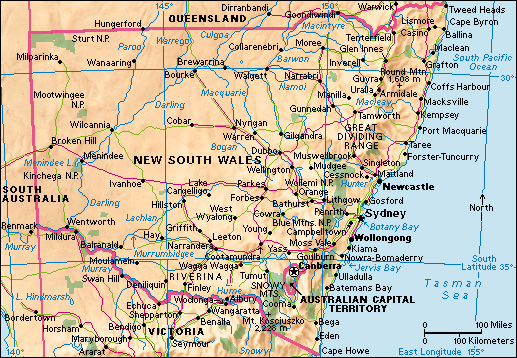Armidale (pop. 21,312) is a city in southeastern Australia. It lies in the northeastern part of the state of New South Wales. Armidale is a transportation hub in the New England highland area of the Tablelands land region. Air and rail services link Armidale with Sydney, to the south, and Brisbane, to the north. 
Important industries in Armidale include education, health care, retail trade, and tourism. The city is home to the University of New England. Farmers in the area produce high-quality beef cattle and wool.
Armidale is known for its fine churches and cathedrals. It is the seat of the Anglican and Roman Catholic dioceses (church districts) of Armidale. The city’s prominent sites include Saints Mary and Joseph Catholic Cathedral, opened in 1912, and St. Peter’s Anglican Cathedral, opened in 1875.
The city is also home to many important cultural sites. The New England Regional Art Museum, opened to the public in 1983, houses one of the largest art collections in the region. The Judith Wright Memorial, dedicated in 2004, honors one of Australia’s most famous poets. Wright was born at Thalgarrah Station, just west of Armidale, in 1915.
The Anēwan Aboriginal people are the traditional inhabitants of the land on which Armidale stands. They are part of the Anaiwan Aboriginal language group from the New England area of New South Wales. European pastoralists (livestock farmers) settled in New England in the early 1800’s. In 1839, the British surveyor George James MacDonald established the Armidale settlement on an open plain. MacDonald was the first commissioner of Crown lands for the New England district.
Armidale’s population slowly increased as the settlement became the administrative center for the broader region. Armidale was officially declared a town in 1849. The Great Northern Railway line (later known as the Main North Line) reached the town in 1883. Armidale was proclaimed a city in 1885.
